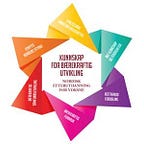Gender and sustainability
Charlotte Gilbert Jespersen (DK)
Aalborg University
How do women get share in sustainability?
Is sustainable development something different for women than for men?
It might be strange questions to ask, but every day it becomes more and more evident to me, how topics concerned to sustainable development are perceived differently by men and women.
I will just in a few examples describe the role of gender in three fields: environmental disasters, education, politics.
Environmental disasters:
Bangladesh floods 1991: In some cultures women can not move in public without men. It was part of the reason why five times as many women drowned as men by the floods in Bangladesh.
Indonesia tsunami 2004: Studies from the tsunami in Indonesia showed, that children make women more vulnerable than men. Here were no survivors women with more than one child in their care.
Immigration over the Mediterranean sea 2012 — … : The same happens unfortunately also among the refugees in the Mediterranean in recent years.
Education:
Children mean a lot in education, teenage mothers, child brides, etc. prevents a lot of women from getting an education and to support themselves. Access to contraception is essential and a very simple invention as menstrual cup made that young women can go to school. This is particularly true in countries where menstruation is associated with something unclean.
We know that education is one of the main factors for women’s self-reliance and a positive consequence of this is that they have less children. The global population growth is probably one of our biggest sustainability challenges.
Politics:
Around the world women are underrepresented in power related to politics and economy. It is obvious in agriculture, where women globally account for 90% of the workforce, but many places they neither own the land or participate in decisions about it.
In most country's the GDP does not account the large work of women.
Studies also show that when women’s work is mechanized, it changes status and becomes for men.
And what has all this to do with Ålborg University and the training for Sustainable Design (BD) Engineer?
For me it was important to look at sustainability as much more than just insulation, energy and waste management. As other than climate and human consumption of Earth’s resources. It is about attitudes and new ways of viewing the world than the growth mindset. And there is much to look at: rich and poor, white and colored, city and country, and so on.
In engineering programs are among both students and teachers a great preponderance of men. Overall, an average of 80% men among professors in Denmark.
In my work, I have reflected on:
Is the women’s and men’s choice of solutions based on their own gender experience or do the institution’s norms have a sexual meaning?
When you look at education in sustainable development and try to see it in a sexual / gender perspective, you get brand new opportunities to look at things. Here it’s not just about putting some female perspectives, but rather to open up and try to see new and different perspectives.
